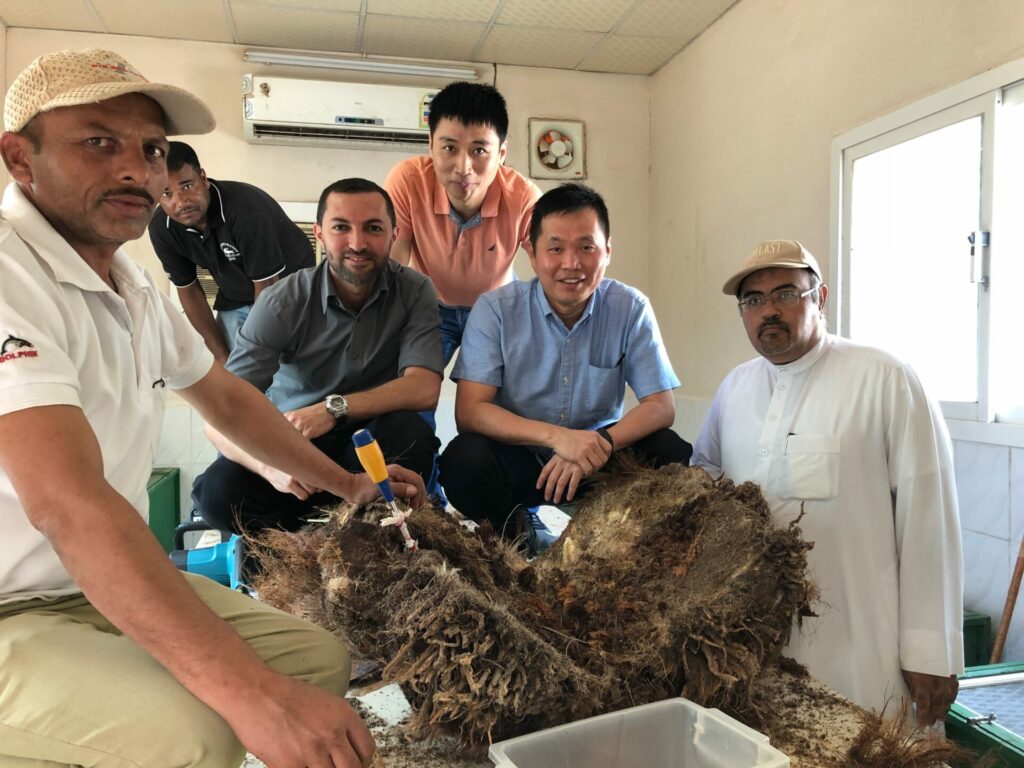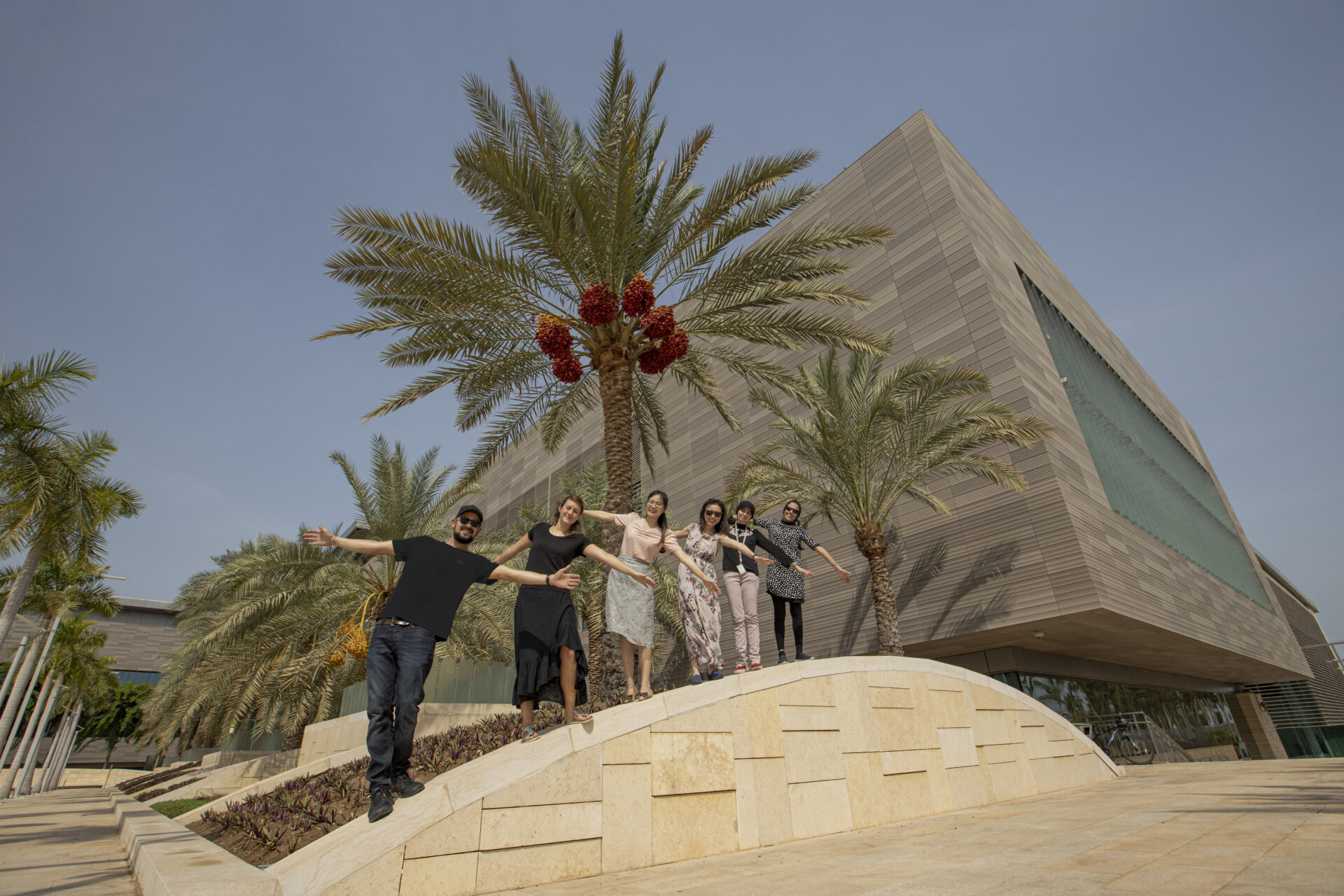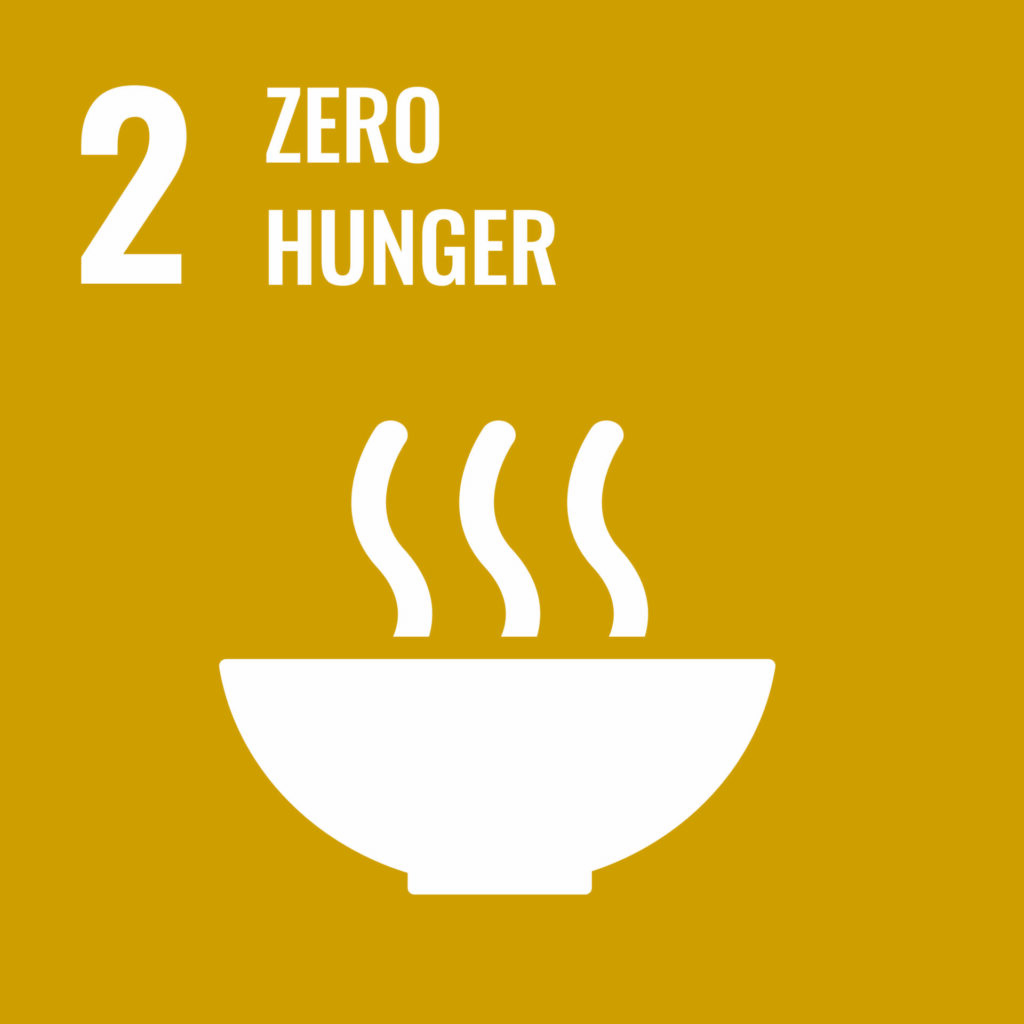At least 8,000 years old, the date palm is so culturally and economically important to Saudi Arabia that it takes center stage on its national flag, representing growth, vitality and prosperity. Saudi Arabia is also one of the world’s largest producers of date palms. Now, researchers at KAUST are working on preserving Saudi Arabia’s coveted cultivars, improving their breeding protocols, understanding their biology and protecting them from disease and climate change.
“Saudi Arabia’s vision for 2030 is a more sustainable country with more sustainable agriculture.”
“Saudi Arabia’s vision for 2030 is a more sustainable country with more sustainable agriculture,” says plant scientist Rod Wing. “This involves reducing water uptake by crops, for example, and that requires learning their biology so we can select plants that can grow in extreme environments while using less resources. Another part involves education and outreach, and so KAUST is involved in training the next generation of plant scientists who will be stewards of the country’s agriculture and environmental protection.”
This is where the KAUST’s Fast Fit Palms project comes in. Led by root developmental biologist Ikram Blilou, the project aims to establish a molecular toolbox that can be used for improving date palm growth and preserving elite local varieties. The Fast Fit Palms project is also establishing a breeding program that aims to find ways to improve date palm crop resilience in the face of challenging conditions. This work will establish a foundation of knowledge that can be carried forward by the next generation of researchers.

© 2021 KAUST
It’s a date!
Blilou’s interest in date palms was ignited while eating a date in the Netherlands. At the time, she was an associate professor at the University of Utrecht. “I thought: I love dates, so why don’t I study them? I tried to germinate the seeds; they germinated and, well, voila! The journey began.”
“I thought: I love dates, so why don’t I study them? I tried to germinate the seeds; they germinated and, well, voila! The journey began.”
What began as a weekend hobby in her university lab has since developed into award-winning research. In 2020, Blilou and colleagues won the United Arab Emirates’ Khalifa International Award for Date Palm and Agricultural Innovation in the category of Distinguished Innovative Studies and Modern Technology.
The award was for a collaborative study between researchers at KAUST and in Mexico, England and China. Their work revealed a mechanism used by date palms to survive in a dry environment whereby they stop growing until surrounding conditions become more favorable.
“Date palms undergo remote germination, which involves the plants making a structure that carries the seedling, and thus the baby plant, deep into the ground,” explains Blilou. Embryo development is then paused within a growing and dividing structure called the cotyledonary petiole. When the soil conditions become favorable, development kicks in for the roots and shoots to separate and grow below and above ground.
“Date palms are also interesting because their roots don’t only grow downwards, but also sideways and sometimes even upwards, maximizing water uptake from their surroundings,” says Blilou. These research findings could help KAUST and breeders develop crops that are more adaptable to desert conditions.
“Dates will have great potential for future food security,” adds Blilou. The precious fruit is rich in slowly digested sugar, and vitamins and minerals. The plant also offers many other uses. The trunks and leaves can be used as a building material and in textiles, and the seeds can be used to extract date palm oil and to produce cosmetics. Date palm milk can even be found in some supermarkets.
Battle of the beetle
For these productive trees to continue growing, they need to be protected from one of their most deadly enemies: the red palm weevil. These flying beetles feed on and lay their eggs inside date palms, and they have destroyed palm farms all over the world. Detecting the pests is expensive and tedious, and it is not always reliable. Past solutions have involved the use of sniffer dogs, inserting sensor probes into individual trees or even screening trees with computer-based tomography.
Boon Ooi, professor of photonics, brought to light a solution. He and his team previously developed a hair-thin optic fiber for optimizing oil production. They designed a tiny probe that can be deployed many kilometers underground through oil well downholes, which feeds back data to an algorithm-trained sensor to monitor fluid dynamics inside the piping. After hearing from a colleague about the weevil problem faced by local date palm farmers, Ooi got in touch with KAUST’s vice president for research and said, “I think we have a solution to monitor many trees at once.”
Ooi and his team then modified and trained their sensor to filter out the munching noises made by 12-day-old weevil larvae from other surrounding sounds. Their final product involves sending a laser pulse through a very long optical fiber that can be wound around many trees at once. The sound of weevil munching distorts the frequency of the light and sends this feedback to the sensor.
The team has tested their technology on Ministry of Water and Agriculture date palm farms dedicated to red palm weevil research in Al-Ahsa in eastern Saudi Arabia. It has also been tested on private farms.
“A 60-year-old farmer on a private farm hugged us and shook our hands because he was so grateful for the technology. So many of his trees had been destroyed by this beetle.”
“It’s a rewarding project to work on,” says Ooi. “A 60-year-old farmer on a private farm hugged us and shook our hands because he was so grateful for the technology. So many of his trees had been destroyed by this beetle.”
The technology has grabbed the attention of many people worldwide. Ooi has been contacted by people in the US and the Philippines, for example, about testing the technology for detecting similar pests that infect ash and maple trees, and also coconut palms.
The technology has been patented and a spin-off company is soon to be launched. In the meantime, Ooi and his colleagues are continuing to fine tune their sensor for use in the oil and gas industry, and in agriculture.
“We have to take care of the plant as an individual,” says Blilou. KAUST’s date palm research and collaborations are playing a vital role in preserving, protecting and breeding this important crop of the future.


